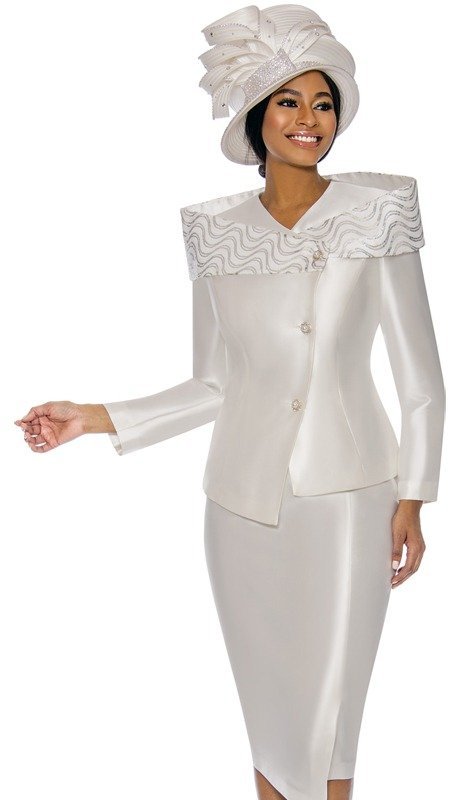Church Suit Etiquette: What To Wear and How To Wear It
Whether you're a regular attendee or preparing for a special service, understanding church suit etiquette can help you navigate the fine line between personal style and religious decorum.

When attending church, selecting the right attire is not just about fashion—it's also about showing respect and reverence for the occasion. Church suits for women play a crucial role in achieving this balance of modesty, style, and appropriateness. Whether you're a regular attendee or preparing for a special service, understanding church suit etiquette can help you navigate the fine line between personal style and religious decorum.
Choosing the Right Church Suit
The foundation of appropriate church attire begins with selecting the right suit. Opt for fabrics and cuts that are modest and elegant. Traditional choices include lightweight wool, cotton blends, or linen, depending on the season. Avoid overly casual fabrics like denim or materials that are too flashy or revealing. Colors should generally be subdued and respectful, such as navy, black, gray, or pastels. Patterns like pinstripes or subtle floral designs can add a touch of personality without being distracting.
Dressing Modestly and Respectfully
Modesty is key when it comes to church suits for women. Ensure your suit is neither too tight nor too revealing. Skirt lengths should be conservative, typically falling at or below the knee. If you prefer pants, opt for well-tailored styles that are not overly form-fitting. Necklines should be modest, avoiding plunging styles or spaghetti straps. If your suit has a jacket, it should cover the shoulders appropriately.
Accessories and Footwear
Accessorizing your church suit requires careful consideration. Choose accessories that complement rather than overpower your outfit. A simple necklace or pearl earrings can add elegance without being ostentatious. Hats are a traditional accessory for church attire, especially in more formal settings. Opt for a stylish hat that matches the color scheme of your outfit and complements your facial features.
Closed-toe shoes are generally preferred for their modesty and formality. Choose heels of a moderate height that are comfortable enough for walking and standing during the service. Avoid sandals, flip-flops, or overly casual footwear that may detract from the overall look.
Seasonal Considerations
Church suit etiquette can vary slightly depending on the season. In warmer months, lighter fabrics and softer colors are appropriate. Consider breathable materials like cotton or linen to stay cool while maintaining a polished appearance. In colder weather, opt for heavier fabrics like wool blends and accessorize with scarves or gloves that complement your ensemble.
Cultural and Regional Variations
Keep in mind that church suit etiquette may vary based on cultural or regional norms. Some communities may embrace more colorful attire or specific cultural garments as part of their religious practices. It's always respectful to familiarize yourself with local customs or inquire if you're unsure about what is appropriate for a particular church or congregation.
Conclusion
Choosing and wearing a church suit involves more than just picking out clothes—it's about demonstrating reverence and respect for the occasion. By selecting modest, elegant attire that reflects your personal style within the boundaries of church suit etiquette, you can feel confident and comfortable during religious services. Remember, the goal is to honor the sacredness of the moment while expressing your faith and individuality through your attire.
Whether you're attending weekly services or special events, your church suit should reflect both your personal style and the solemnity of the occasion. With these guidelines, you can navigate church suit etiquette with grace and confidence.
Read more: The Importance of Sunday Church Suits
What's Your Reaction?










![Wireless Connectivity Software Market Size, Share | Statistics [2032]](https://handyclassified.com/uploads/images/202404/image_100x75_661f3be896033.jpg)



